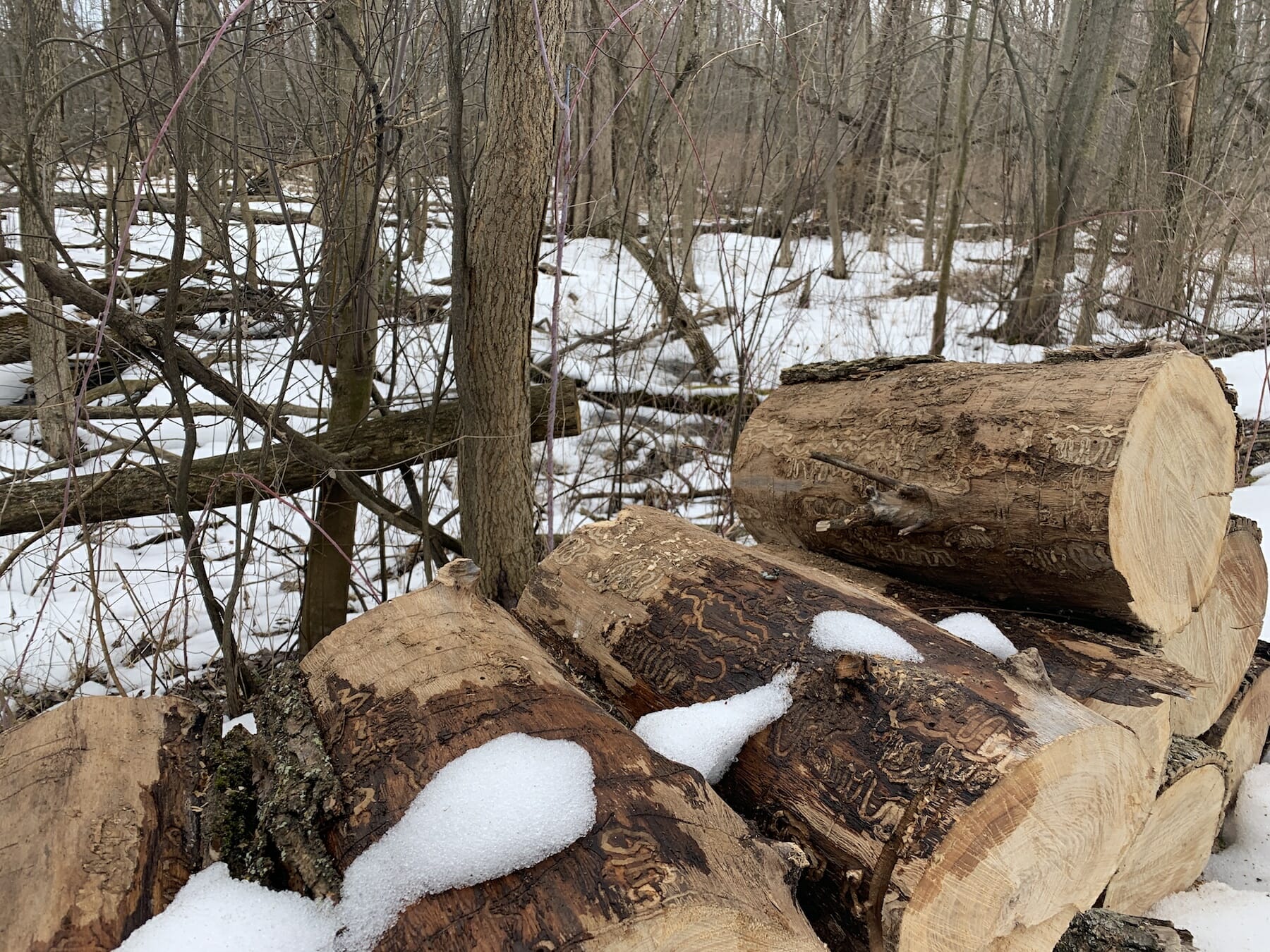By Jamie Vaughan
While emerald ash borer is old news in Lower Michigan, the impacts are still playing out today.
In Sparta, ash trees once dominated the floodplain forests along Nash creek. Now, few live trees remain among thousands of dead trees in various states of decay.
With limited markets for firewood, poor accessibility due to saturated soils, and risks associated with removal increasing every day, forest landowners have few options but to watch their trees fall.
Streams like Nash Creek that were once protected by an ash canopy are now completely daylighted.
Emerald ash borer is an exotic beetle that was discovered in southeastern Michigan near Detroit in the summer of 2002. Since its discovery, emerald ash borer has killed hundreds of millions of ash trees in North America.
Luckily, federal funding like the Great Lakes Restoration Initiative is helping to repair the damage of invasive forest insects and disease.
Trout Unlimited, Land Conservancy of West Michigan, and other local conservation partners are helping some of the hardest hit communities use these funds to replant and restore these forestlands that are so critical to water quality of the Rogue River.
“We’re working with community partners, nurseries and forest landowners to select and plant a diverse mix of climate-adapted species that in the long run will help restore function in these important wetlands” said Nick Sanchez of the Land Conservancy.
This spring, Trout Unlimited is hiring a work crew to plant trees along Nash Creek in forests hit by emerald ash borer. They hope to create a successful model for reforestation and continue these efforts to help more Michigan landowners begin to repair their forests.
This project is made possible by funding from the U.S. Department of Agriculture, Forest Service through the Great Lakes Restoration Initiative.



